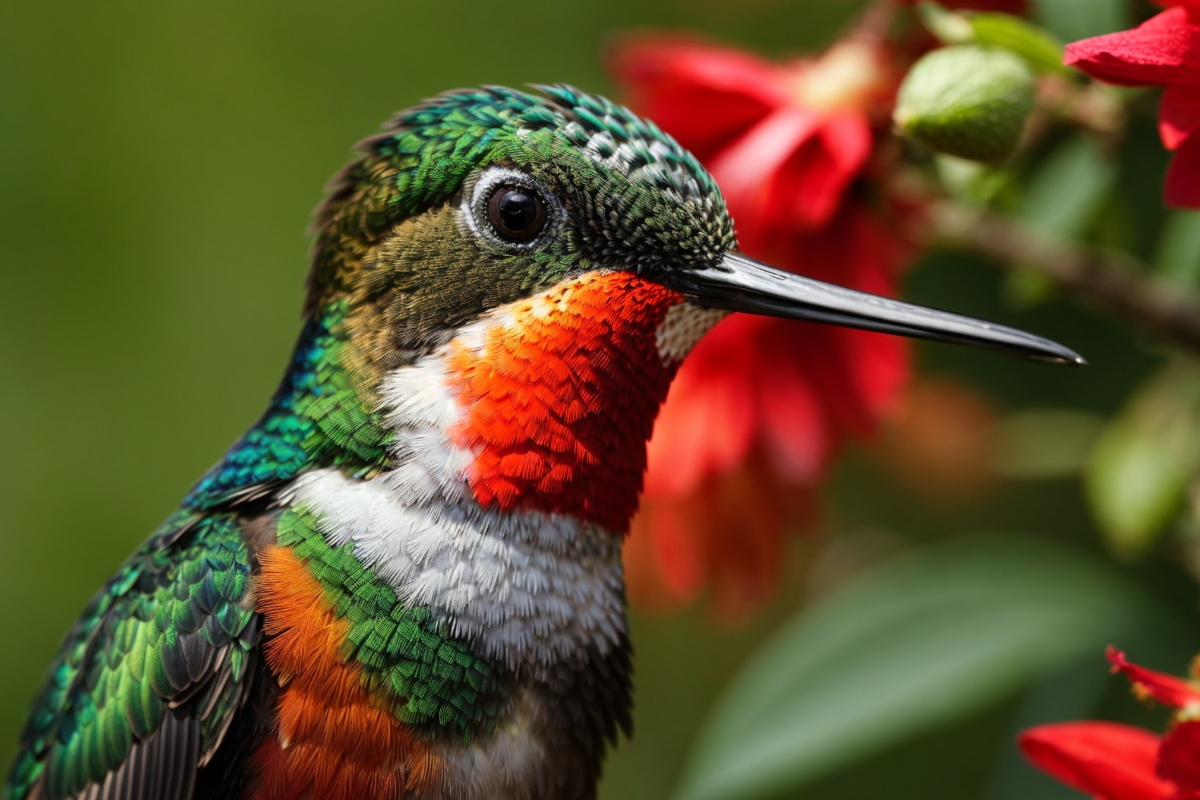Hummingbirds can be found in different states in Central and South America at various times of the year. Although they are commonly found in the Western States of the United States, like California and Oregon, you can also find them in many states across North and South America.
During warm weather, hummingbirds visit South Carolina to feed, breed and nest, but when the weather gets too cold, they leave based on instinct.
South Carolina is one of the states in the US without a resident hummingbird species. But still, residents of this state are lucky to have some species of hummingbirds migrating seasonally. Let’s find out when hummingbirds bid goodbye to South Carolina.
4 Key Takeaways About Hummingbirds In South Carolina
- Migration Timing: Hummingbirds depart South Carolina from late August to October, influenced by the changing weather. Males leave first, followed by females and then juveniles.
- Common Species: The Ruby-throated hummingbird predominantly nests and breeds in South Carolina. Rufous hummingbirds visit seasonally, with 8 other species being rare visitors.
- Best Spots: These birds are common along the Atlantic Coast, especially in Charleston and Myrtle Beach and in parks like Hunting Island State Park.
- Attracting Tips: Planting nectar-rich flowers and hanging sugar-water feeders from mid-March to mid-October can attract hummingbirds. Feeders can be left out longer for resident hummingbirds or injured hummingbirds.
Related post to read about Best Hummingbird Feeders.
- 4 Key Takeaways About Hummingbirds In South Carolina
- When Do Hummingbirds Leave South Carolina?
- Hummingbird Species Frequently Found In South Carolina
- Where Can You Find Hummingbirds In South Carolina?
- When Do Hummingbirds Arrive In South Carolina?
- Do Hummingbirds Arrive In South Carolina At Different Time?
- Do Hummingbirds Spend All Year In South Carolina?
- How Can You Attract Hummingbirds in South Carolina?
- What Kinds Of Plants Should Be Grown To Attract Hummingbirds In South Carolina?
- Can Feeders Attract Hummingbirds In South Carolina?
- When Should You Put Out Your Hummingbird Feeders In South Carolina?
- When Should Hummingbird Feeders Be Taken Down In South Carolina?
- Where Do Hummingbirds From South Carolina Migrate To In The Winter?
- Conclusion
- Useful Links:
When Do Hummingbirds Leave South Carolina?
Hummingbirds begin leaving South Carolina as the summer transitions to winter. The sequence of their departure is as follows:
- The male hummingbirds leave first, typically by late August.
- Female hummingbirds depart shortly after, around early September.
- Baby hummingbirds, having mastered migration skills, are the last to leave.
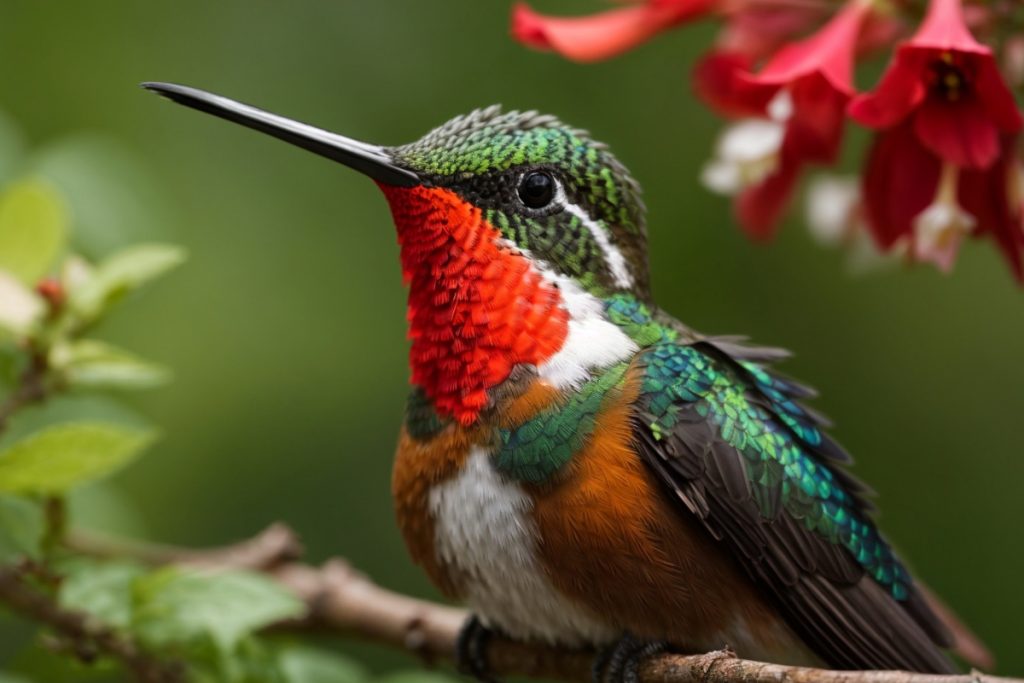
Bear in mind that this migration pattern is mainly influenced by changing weather conditions and the bird’s natural instincts.
Also, due to the unpredictability of the weather in South Carolina, you can still find hummingbirds hanging around the state by October. They all migrate from the state when the weather conditions become unbearable.
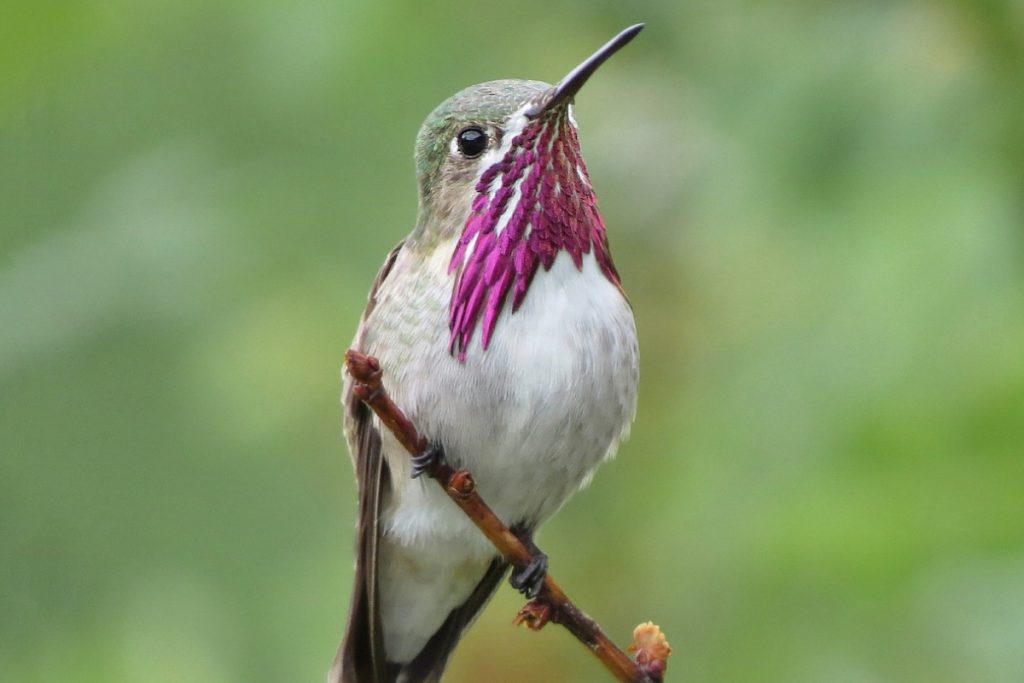
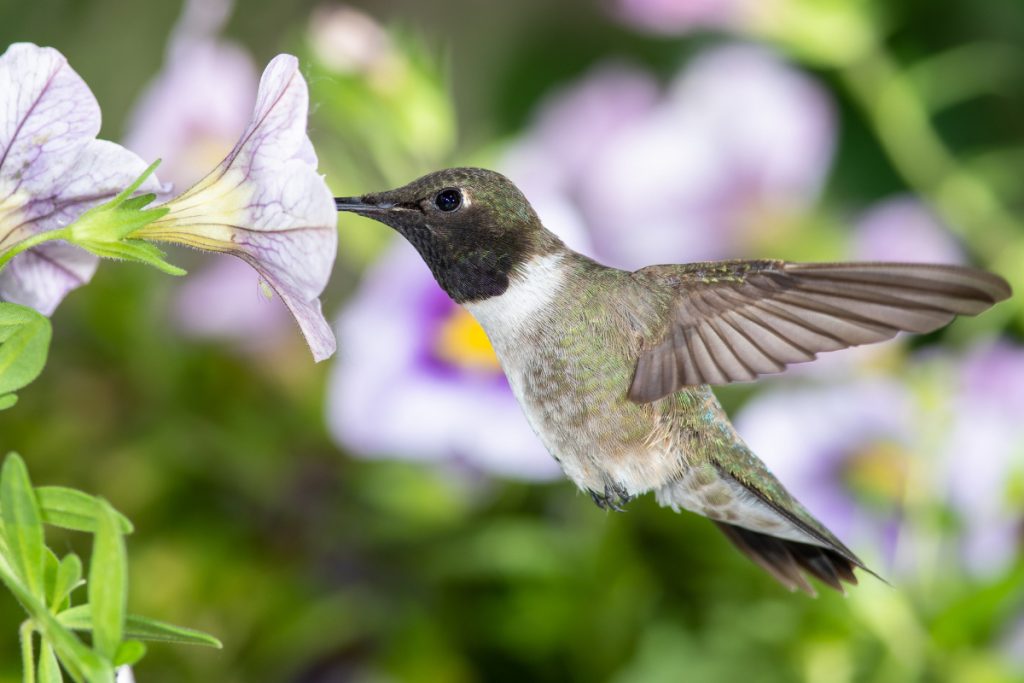
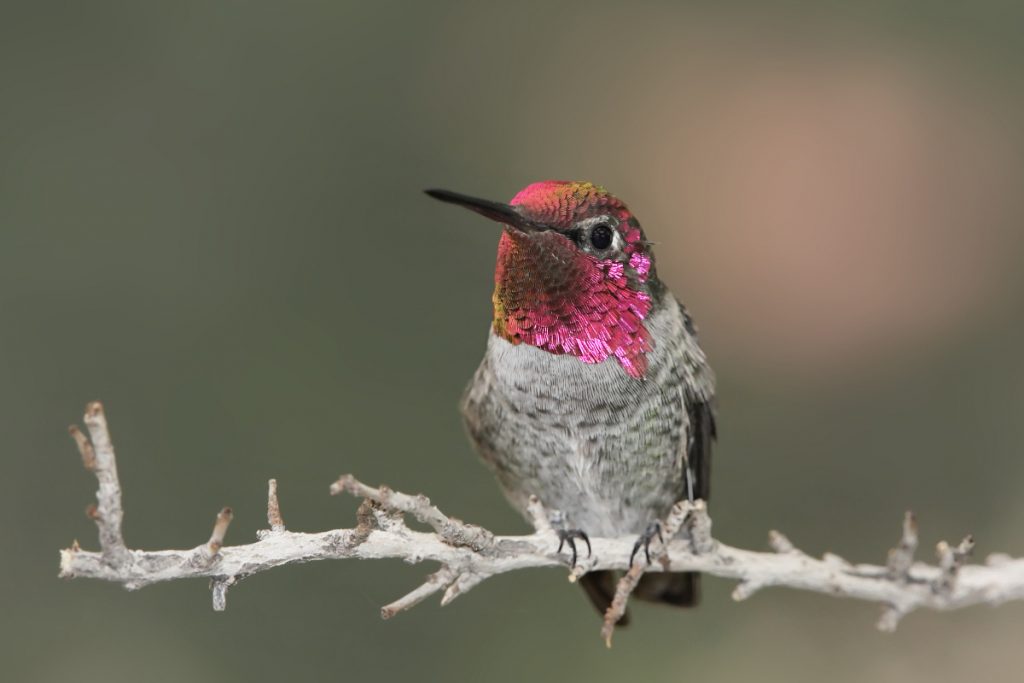
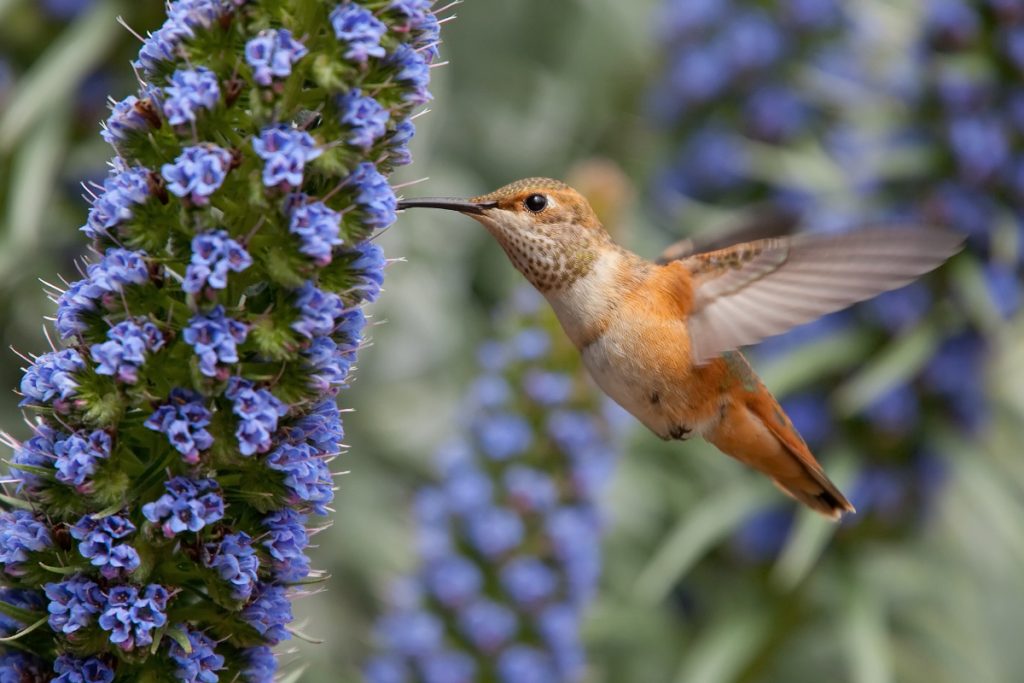
Hummingbird Species Frequently Found In South Carolina
In South Carolina, you can find about 10 types of hummingbirds. However, being the only species that breeds and nests in the state, the Ruby-throated hummingbird is the most commonly seen species. In summer, these are the only hummingbird species that you’ll find in South Carolina.
Rufous hummingbirds are also found in South Carolina, but these birds are seasonal migrants to the state.
The other 8 species are accidental visitors to the state and are not frequently seen. They are: Allen’s, Anna’s, Black-chinned, Blue-throated mountain gem, Broad-billed, Broad-tailed, Buff-bellied, and Calliope hummingbirds.
Where Can You Find Hummingbirds In South Carolina?
You can find Ruby-throated hummingbirds on beaches and wooded areas near lakes. A major spot to see them is on the Atlantic Coast of South Carolina, especially in Charleston and Myrtle Beach.
These delightful birds can also be found in wooded areas near lakes and beaches. Some notable spots to spot them in South Carolina are popular parks like Hunting Island State Park and Caesars Head State Park. Central areas near Lake Murray in Columbia are good spots to see hummingbirds, thanks to the abundance of nectar-rich flowers in the area.
While hummingbirds can be commonly sighted in these places, you can easily attract them to your yard by creating a welcoming environment for them.
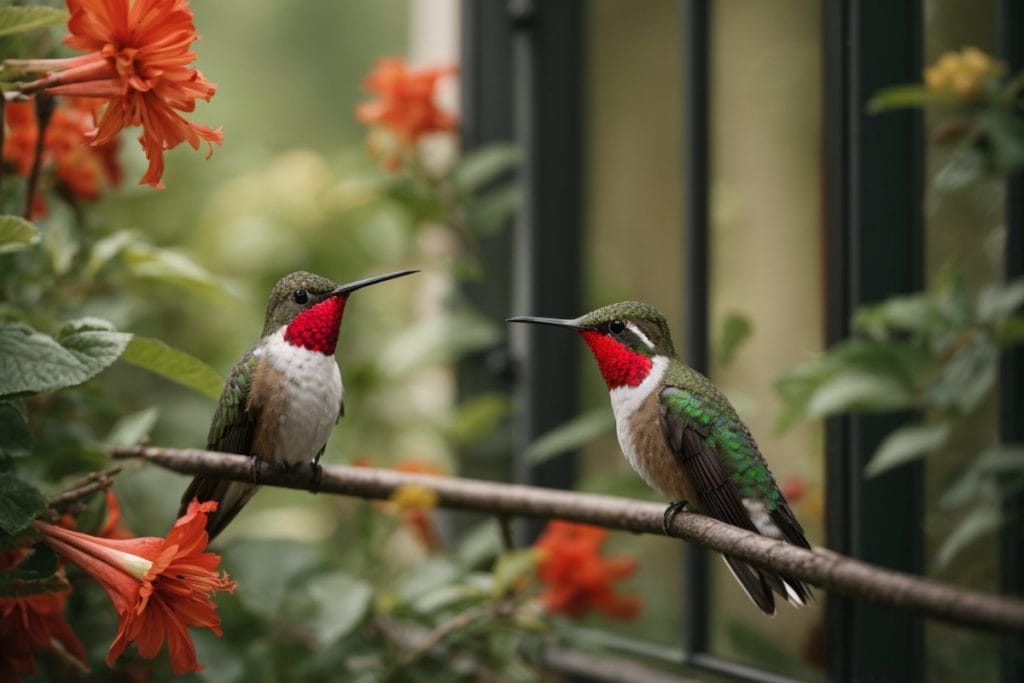
When Do Hummingbirds Arrive In South Carolina?
Hummingbirds migrating to South Carolina start arriving from mid/late March – early April. But, due to yearly variations in hummingbird species and weather conditions, you can occasionally find them arriving in early February or late May.
Do Hummingbirds Arrive In South Carolina At Different Time?
Yes, hummingbirds arrive in South Carolina at different times. As solo travellers, their arrival time varies, depending on their species, migratory patterns, and weather conditions.
In essence, their arrival follows a scattered pattern, as male hummingbirds lead the way with their early arrival. They arrive in the state earlier to establish their territories, while the females join them weeks later.
Do Hummingbirds Spend All Year In South Carolina?
As mentioned earlier, South Carolina does not have a permanent hummingbird species. So you can find only native species that come to the state for breeding and nesting, migrant species passing through, and occasional accidental visitors.
When the temperature drops and the weather turns colder, Ruby-throated species make their way out of South Carolina to find warmer regions where they can survive.
However, records have shown that some Ruby-throated species stay in the state all through the year. Typically, this could be as a result of milder winter temperatures, which they can survive.
It’s also normal to find old and injured birds that are too weak to migrate, staying in the state all year long.
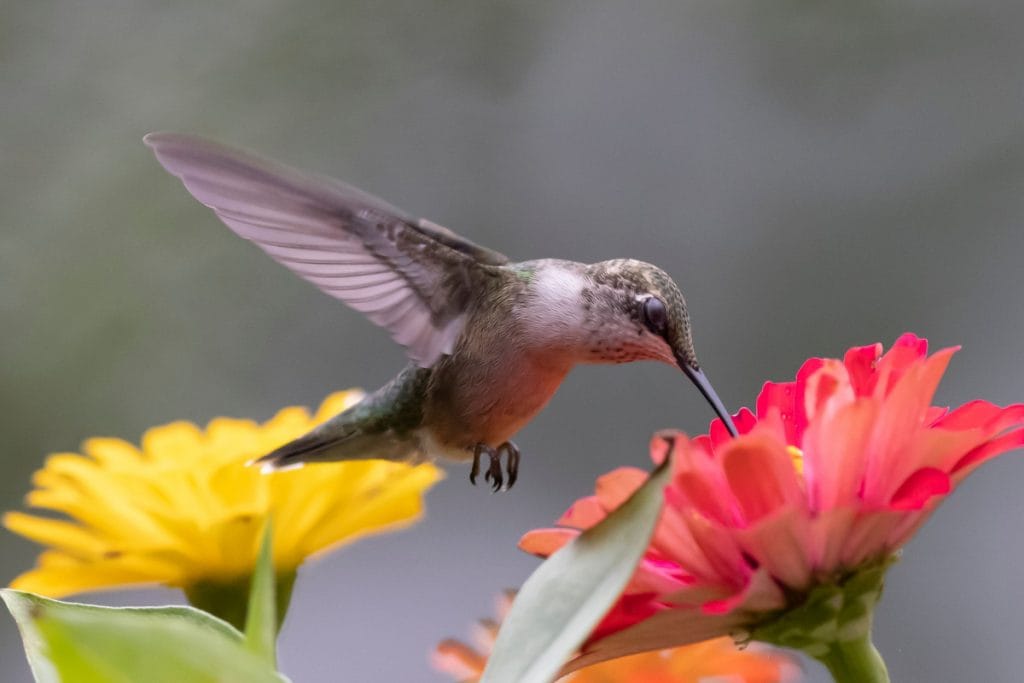
How Can You Attract Hummingbirds in South Carolina?
If you’d like to attract hummingbirds in South Carolina, then there are a variety of ways in which you can attract them to your environment. A super-effective way is by cultivating plants that provide their primary food source – nectar from flowers.
Fun fact: hummingbirds visit 1000- 2000 flowers daily, so the more flower variants you plant, the better your chances of attracting them are!
As pollinators, hummingbirds are naturally drawn to plants that are pollinator-friendly. Therefore, it is advised that you plant tubular-shaped flowers to attract hummingbirds and to prevent other pollinators like bees from accessing the nectar.
But that’s not all – hummingbirds also depend on insects like small bugs to supplement their diet. These insects provide them with vital nutrients like fat, proteins, and salt that they can’t get from nectar. Hatchlings especially need these nutrients to grow into strong adults.
To avoid harming your special visitors, keep in mind that you have to keep your garden hummingbird-friendly.
What Kinds Of Plants Should Be Grown To Attract Hummingbirds In South Carolina?
Some of the plants that can be grown to attract hummingbirds in South Carolina include columbines, trumpet vines, red cardinal flower, salvia, bee balm, lupines, red buckeyes, beard tongues, rhododendron, petunias, and so much more.
Can Feeders Attract Hummingbirds In South Carolina?
While nectar-rich and insect-friendly plants are an effective natural way to attract hummingbirds in South Carolina, they are not the only way. You can also attract them through nectar feeders.
The nectar to be filled in these feeders is an easy-to-prepare sugar-water solution consisting of a cup of white sugar and 4 cups of water. Once you’re done preparing this solution, fill them up in your feeders and hang them outside your window.
It’s important to note that artificial nectar serves as a supplementary diet because they don’t provide hummingbirds with the full nutrients they’ll get from flowers and insects. However, ensure that you change the nectar solution every few days because sugar can ferment quickly, making it a breeding ground for bacteria.
Since these birds are attracted to vibrant colours, buy colourful feeders in vibrant shades of red, pink or orange. But don’t colour the content of your solution with additives or dyes.
Even if you’ve already cultivated a variety of nectar-rich flowers, you can still provide these feeders, as these birds enjoy having multiple food options.
When Should You Put Out Your Hummingbird Feeders In South Carolina?
To welcome the early arrivals in South Carolina, put out your feeders in mid-March. Putting out your feeders by this time is a good way to attract early migratory visitors.
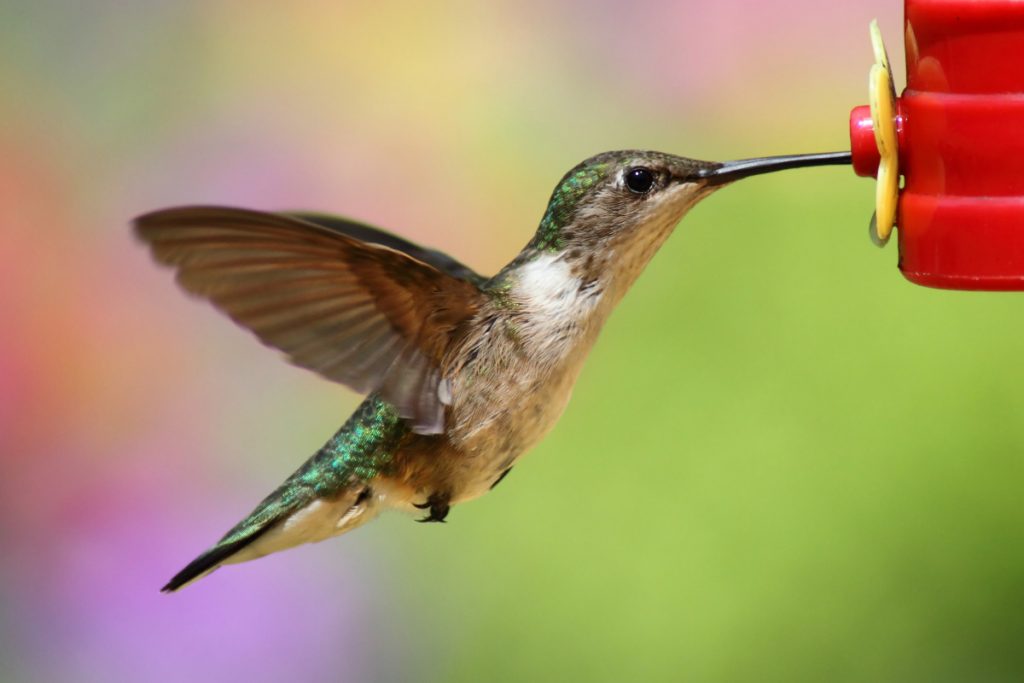
When Should Hummingbird Feeders Be Taken Down In South Carolina?
Most migrating hummingbirds leave South Carolina by October, so you can take down your feeders by mid-October. Or at least 2 weeks after you last sight them at your feeders.
However, if you wish to continue feeding red-throated species that choose to stay back in the state or old and injured hummingbirds that are too weak to migrate, then you can leave out your feeders for as long as you like. Just remember to wash the feeders and change the solution every few days.
Where Do Hummingbirds From South Carolina Migrate To In The Winter?
Typically, when these tiny birds leave South Carolina, they don’t travel to the same place. Some birds travel south to Florida or the Bahamas, while others travel west towards Texas or Louisana. Some even travel further to countries like Cuba, Haiti and regions in Central America.
Conclusion
Although bird lovers get sad to see hummingbirds leave when the season is over, these remarkable birds are creatures of habit and will definitely return to a place they’ve fed from before, even if it takes a while.
So it’s fine to miss them, but don’t be sad; as long as you keep them well-fed when they visit your garden, you can be sure of their return again next summer. And that’s certainly an experience to anticipate!
Thanks for reading.
Useful Links:
Related Posts to Read – Hummingbirds Migrations:
- Best Hummingbird Feeders.
- When Do Hummingbirds Leave Ohio?
- When Do Hummingbirds Leave Michigan?
- When Do Hummingbirds Leave Pennsylvania?
- When Do Hummingbirds Leave Florida?
- When Do Hummingbirds Leave Oregon?
- When Do Hummingbirds Leave New York?
- When Do Hummingbirds Leave Oklahoma?
- When Do Hummingbirds Leave Minnesota?
Related Posts to Read:
- Do Hummingbirds Beaks Open When Feeding?
- The Mysteries of Hummingbird Flight.
- 6 Fascinating Facts About Hummingbird Sizes.
- Ruby-Throated Hummingbird Migration Map.
References:
- About South Carolina.
- About Hummingbird (Link).
- Greenewalt, C. H. (1960). Hummingbirds. New York: Doubleday. Google Scholar.
- Carey C. The impacts of climate change on the annual cycles of birds. Philos Trans R Soc Lond B Biol Sci. 2009 Nov 27; 364(1534):3321-30. doi: 10.1098/rstb.2009.0182. PMID: 19833644; PMCID: PMC2781852.
- Rico-Guevara A, Rubega MA, Hurme KJ, Dudley R. Shifting Paradigms in the Mechanics of Nectar Extraction and Hummingbird Bill Morphology. Integr Org Biol. 2019 Jan 2;1(1):oby006. doi: 10.1093/iob/oby006. PMID: 33791513; PMCID: PMC7671138.
- Tyrrell LP, Goller B, Moore BA, Altshuler DL, Fernández-Juricic E. The Orientation of Visual Space from the Perspective of Hummingbirds. Front Neurosci. 2018 Jan 30;12:16. doi: 10.3389/fnins.2018.00016. PMID: 29440985; PMCID: PMC5797624.
- Hummingbirds Sighting (Journey North Map).
